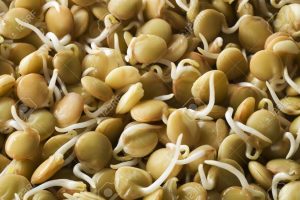Introduction

Our new consulting assignment involves an interesting legume. Our client has been involved in the research and development of functional ingredients. The key functional ingredients that it is focusing on are those that could be derived from soybean (Glycine max).
Soybean is an important crop that began many thousand years ago. In recent years soybean has been gaining attention since it is considered a functional food. Its consumption has been linked to the prevention of cancer, type 2 diabetes, cardiovascular and gastrointestinal diseases, cholesterol reduction, and obesity
The main components responsible for the protection of health are the bioactive compounds such as peptides, lunasin, lectins, Bowman-Birk inhibitors, isoflavones, saponins and others.
As a rich source of protein for food and animal feed, soybean is the most protein-rich plant when compared to other cereals or legumes. Soy protein has high nutritive value. The main components are the storage proteins known as β-conglycinin and glycinin, which represents around 50-85% of the total protein of the grain. Other minor proteins and glycoproteins include lipoxygenases, lections, trypsin inhibitors and α-amylases. As minor components, soybean contain vitamins such as thiamine, riboflavin and vitamin E as well as several bioactive compounds such as isflavones, saponins, phytates, phytosterols, trypsin inhibitors, lectin, and lunasin Bowman Birk inhibitor.
In 1999, the Food and Drug Administration of the USA has issued a document to formalize the therapeutic potential of soybean in preventing heart disease.
The Problem of Diabetes
Diabetes occurs when there are raised levels of glucose in the blood because the body cannot produce any or enough of the hormone, insulin, or use insulin effectively.
Diabetes is a major human disease. According to International Diabetic Federation (IDF), in 2017 there were 425 million people in the world had diabetic condition, an increase from 151 million in 2000. Most of the diabetic sufferers are in developing countries who could not afford expensive treatment using conventional drugs. It is estimated that the total healthcare expenditure by people with diabetes was US$727 billion in 2017.
Many governments in large developing countries, such as China, India and Indonesia, are encouraging research on bioactive compounds that could be found in plants, herbs and grains that could treat diabetes. Many of these plants have been used in traditional medicines to treat diabetes. Diabetic patients usually experience lower-quality life due to complications from using current conventional drugs.
Our client has been researching on the bioactive compounds in plants, herbs and grain that could treat and manage health of diabetic patients. Based on literature review and attending conferences in India, the client identified and contacted scientists who are conducting research on these bioactive compounds to treat diabetes. It also funded several research activities using diabetic-induced wistar mice. The client had identified a new compound that it has isolated and investigated that has the potential to treat diabetes from germinated bean sprouts.
Germinated Soybean Sprouts
Extensive literature reviews show that germination process provides increased nutritional value, by improving the digestibility and increasing the amount of protein efficiency ratio, reducing anti-nutritional factors in legumes, such as protolytic inhibitors and lections, causing hydrolysis of oligosaccacharides (raffinose and stachynoese) present in soybeans, which cause flatulence.
Although germination is a complex phenomenon, it can be characterized when under appropriate conditions the embryo axis of the seed continues its development, which is interrupted by physiological maturity. A seed will germinate when certain conditions are favourable, such as adequate water supply, suitable temperature, composition of gases in the atmosphere, light (some seeds) and absence of germination inhibitors. The first two conditions are the most critical factors.
The direct use of soybeans in human foods has been limited by the presence of several anti-nutritional factors. The majority of processed soybean products have been derived from dry mature soybeans. However, the development of products from germinated soybean presents another option to increase the versatility and utilization of soybeans. In addition, germination has been identified as an inexpensive and effective technology for improving the antithrombotic, anti-inflammatory, anti-oxidative and anti-obesity activities.
The Process of Germination
Germination is a feasible and low-cost process that allows the decrease of non-nutritional compounds as well as the increase of bioactive compounds of some legumes. During this process, a series of cellular events take place to facilitate the growth of the embryo.
Germination has three phases:
- Phase 1: hydration. The tissues of the seed absorb the highest possible amount of water, and the respiration rate and volume of the seed increase.
- Phase 2: germination. Under this phase, there is a transformation of metabolites necessary for the development of the seedling takes place, the absorption of water is reduced, respiration and synthesis of new compounds increase, allowing cellular expansion and division, until the embryonic axis begins to express. During this stage, the storage nutrients (protein, lipids and carbohydrates) are mobilized in order to provide the necessary energy for protein synthesis and growth of the seedlings.
- Phase 3: growth. It is related to the emergence of the radicle. In this stage, digestive enzymes are activated and the proteins are hydrolysed to amino acids, which act as precursors for the synthesis of new proteins or other nitrogen-containing compounds.
As germination mobilizes the nutrients required for the development of the seedling, it removes some non-nutritional factors such as phytates, oligosaccharides, tannins and protease inhibitors. .
Conclusion
Our client plans to undertake more research on the new bioactive compound identified in soybean sprouts for treating diabetes.